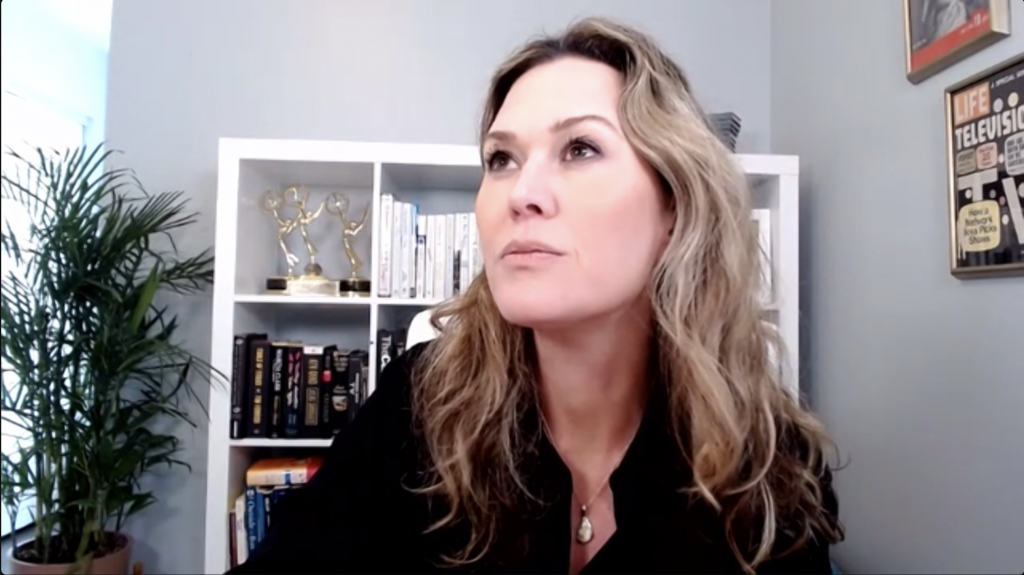We all have seasons in our careers where we’ve been knocked down. It might be getting laid off, having a toxic boss, or losing a business.
The question is: Will you get back up? And if so, how do you start?
One of my clients received a significant industry award this week.
When we started working together a year ago, she felt beaten down and invisible.
She did incredible work inside a big-name university hospital – but she was hiding. She was told she wasn’t good enough and started believing it.
A year later, a huge medical association and the universities she graduated from are recognizing her incredible work.
How I learned to get back up after getting beaten down
I get how this feels and how hard it is to overcome.
Twelve years ago, I was hired by a network to do a specific job: increase and improve output from a team. I got it done. But, I dented some furniture as I did it and was fired.
After starting my company, I let that weigh me down. As a result, it took me a few years to go after some of the biggest projects and clients.
I’m now training leaders in Fortune 100 companies.
How to begin standing in your power again
We are our own worst enemies, reliving something terrible that may have happened years ago. Often, we don’t even know we’re reliving it. We think we’re fine, but trauma is tricky to navigate, and something as simple as a phrase can trigger us, bringing us back to that moment when we felt small.
I hired business coaches.
I also work with a trauma-informed therapist (she helps many of my clients now).
They helped me overcome experiences of my past.
In addition to exploring your past traumas, I recommend practicing self-care for your career. Here’s a few things to include:
- Update your LinkedIn profile. Many people I’ve worked with leave it frozen in time as if they’re stuck in that moment when the terrible thing happened. And yet, they’ve done incredible things that need to be publicly displayed — both to others and to themselves.
- Get a make-over. This includes both clothing and a new haircut/style. Consider also a skincare consultation and lesson. It’s time for an update.
- Record yourself delivering your elevator speech using action words. Start practicing talking about your experience. Who are you? What makes you incredible? If you’re the youngest in your peer group, what do you bring to the table if it’s not years of experience?
- Apply for the awards. Many of my clients think they have to be nominated. The truth is, lots of people nominate themselves or ask a colleague to nominate them. Some hire a person like me to write up their nomination. You’ve done great work– put yourself out there!
What will happen as you stand in your power again
These seem like basic things, but they make a big difference in your mindset. You’ll start to see yourself as a leader again, and others will take notice.
But that’s only half the battle when it comes to amplifying your thought leadership. We also need to talk about the specific tactics to keep your audience and make sure they remember your messages. I address that in my weekly newsletter focused exclusively on public speaking and media interview tips. To get the next issue in your inbox, subscribe here.
These are challenging times. Your team needs you to be a leader now. But, to be there for them, you must take care of yourself first. I’ll be back next week with more tips for strengthening your mindset so you can communicate with power no matter the situation.
P.S. Want more tips? Be sure to sign up for my LinkedIn newsletter where you’ll get exclusive tips on strengthening your mindset to become a better communicator. Click here to subscribe to Thought Leaders Amplified on LinkedIn.
P.P.S. I created a training for health care professionals who need to discover their message and story, deliver it clearly, succinctly, and confidently, and present in a way that intrigues, entertains and keeps the audience’s attention. Share it with your friends in health care. Check it out even if you’re not in health care. The tips and tricks are universal. Click here to learn more.
P.P.P.S. Whenever you’re ready… here are three more ways I can help you build your brand, own your voice, and stand out:
- Want more tactical advice you can implement today? Check out my blog here for great articles, stories, and lessons I’ve shared over the years.
- Looking for one-on-one coaching or a consultation with me? Schedule a complimentary call here to speak to our team about how we can help you.
- Follow me on Instagram here for more media and public speaking tips, videos… and a little fun.









